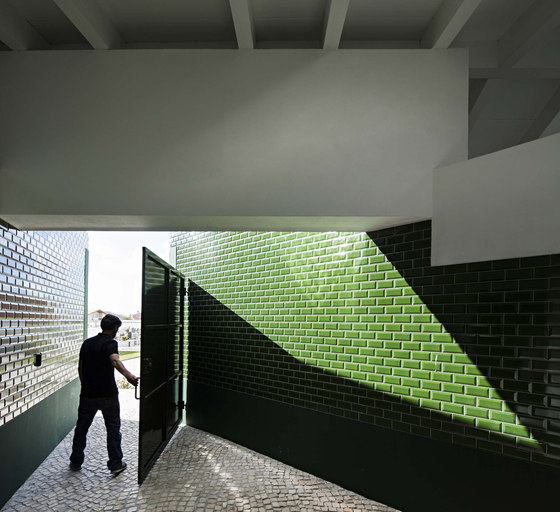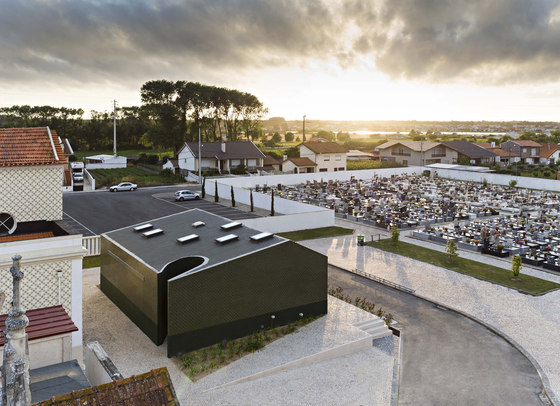
Photographer: Nelson Garrido

Photographer: Nelson Garrido

Photographer: Nelson Garrido
Toilettes in a cemetery do not seem to be the most appealing projects. Not even for the design brief. Not even for the place. Not even for the budget. Nevertheless, for us, it was exciting! We have been there a few times before and we were always uncomfortable, looking at the floor trying not to stumble in the narrow paths between the great marble stones.
So when we were asked to do the rehabilitation of the toilettes (the old building), it was as if it was the first time there. We perceive the hierarchies, the streets, the paths, the square, the church, the entrances and the exits, the trees, the stones, and the green flowerbeds… How beautiful and organized!
The (old) building was huge and absolutely out of the context, with vast flat roofs that almost touch the chapel. It was a “sacrilege” to see this scenario from the south entrance of the cemetery.
All we did was to reduce the size and to summarize the information. An abstract exercise to create an abstract object: no doors, no windows, no sheds or porches. The idea of using ceramic tile coating came naturally. And it was evident: the ceramic tiles had to be green. The object should be more related to the natural elements, and less with the constructed ones, highlighting the church that is so close by.
To achieve this, to create a uniform and neutral object, the ceramic tile must coat the entire building, from the facades to the rooftop. But then comes the reality: technical and economic reality – and rightly so! The workers did not know how do it. And the time schedule? Was it expensive? The design solves everything! We add some plasters to optimize the stereotype of the tiles and to reduce the technical difficulties. A team work!
Through the two extracted mass on the facades we get in the building. On the south side, we access the new facilities for supporting the cemetery workers staff. The main entrance is from the north and take us to the central space, inside the building, but with exterior features, pointed out by the natural light and the Portuguese Pavement on the floor (the sidewalks that surround the building continuity). Here, there are the washbasins, and is a space that works like a pivotal area, between the female, male and accessible facilities.
This is a building without technology, which means that is the wind (strengthened by the north-south orientation) that dehumidifies and renews the air.
Sating on the pre-existing walls we have a timber roof truss with a white glaze. All the interiors are white and have natural lighting through skylights, which reinforces luminous comfort. The marble washbasins match with the outdoor objects of the cemetery. The candle burner is a sturdy and resistant piece made of black painted iron despite the delicate design.
As a whole, these two objects reinforce the hierarchical network of the cemetery, not ceasing to be, by the scale and synthetic unit, plus one of its "salt and pepper shakers ".
M2.senos

Photographer: Nelson Garrido

Photographer: Nelson Garrido

Photographer: Nelson Garrido

Photographer: Nelson Garrido

Photographer: Nelson Garrido

Photographer: Nelson Garrido

Photographer: Nelson Garrido

Photographer: Nelson Garrido

Photographer: Nelson Garrido











